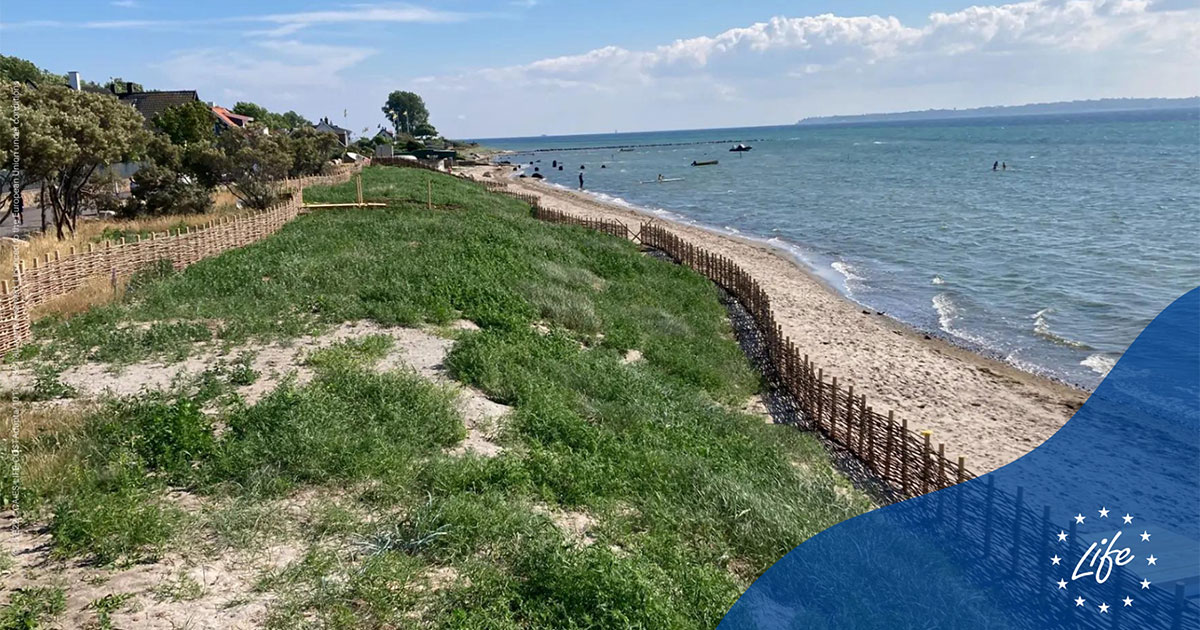Beachfront homeowners have built dykes, dumped concrete blocks, and constructed groins—but all to no avail. In places, the beaches have retreated up to 300 meters inland, leaving long stretches of rubble, boulders, and roots exposed.
It seemed there was little hope until LIFE Coast Adapt—a five-year, €3.7 million project—took a radically different approach. “Climate change means that we must abandon our current view of coastlines,” of the Swedish Geotechnical Institute, who sat on the project reference group. “As the sea rises due to climate change, erosion will increase.”
“Unfortunately, we’ve seen that construction has not been as successful as we thought,” adds Pär Persson, Water Strategist at the Skåne County administrative board. “That’s why we are now looking at nature-based solutions that can do more good.”
By the time it closed in 2023, LIFE Coast Adapt was the largest nature-based coastal adaptation initiative in Sweden. As the project’s Final Report notes, “After five years of testing, we know how nature-based solutions can be developed along the Skåne coast and why they should be the preferred choice.”
Those solutions included removing hard structures and invasive plants in 14 different coastal locations and replacing them with sand dunes, wetlands, and a stream. Two of the more successful trials involved replanting eelgrass and regenerating sand dunes with beach grass in a process known as ‘beach nourishment’. Planting eelgrass provided some useful lessons: it promotes biodiversity, captures CO2, binds sediment, and creates a habitat for marine life—but its ability to protect against coastal erosion was limited.
Working under the slogan Preserve, strengthen, restore, remove from the start, LIFE Coast Adapt adopted an agile approach using “transformative management to prepare and protect society for climate change.” Interventions can be relatively simple—removing hard structures such as concrete pipes and piers helps to re-establish beaches by allowing ocean currents to move more naturally.
Other solutions were more complex. A video showing scuba divers painstakingly replanting eelgrass by hand—between four and 16 plants per square meter—gives an idea of the challenge. Eelgrass was replanted across six trial sites covering a total of 1.2 sq km, and based on the results, larger-scale planting was later carried out in Båstad.
LIFE Coast Adapt is upfront about the challenges of using nature-based solutions, which require long-term commitment but offer significant returns. “Nature-based solutions are often both economically and ecologically more sustainable,” notes the Final Report. “The forces of the coast require space but also patience.” Getting the public onside wasn’t always easy either—many residents opposed the removal of the hard infrastructure they thought would protect them. However, according to the end-of-project survey, “a clear majority were positive to the implemented measures, and 64% considered the most important thing to protect was the coastal environment and its natural habitats.’”

